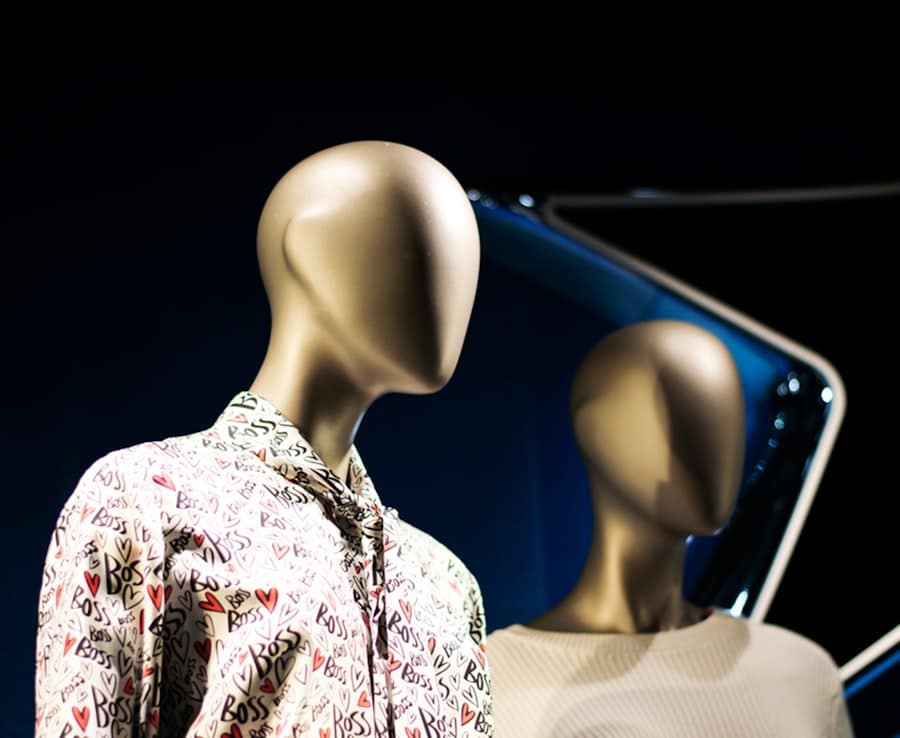The fashion industry, long criticized for its environmental impact and ethical concerns, is undergoing a transformative shift towards sustainability, driven by innovative technologies. Sustainable fashion tech innovations encompass a wide array of advancements that aim to reduce waste, enhance resource efficiency, and promote ethical practices throughout the supply chain. As consumers become increasingly aware of the environmental and social implications of their purchasing decisions, brands are compelled to adopt sustainable practices.
This shift is not merely a trend; it represents a fundamental change in how fashion is produced, consumed, and perceived. At the heart of this transformation lies a confluence of technology and sustainability. Innovations such as artificial intelligence, biotechnology, and blockchain are reshaping the landscape of fashion, enabling brands to create more sustainable products while maintaining profitability.
These technologies not only streamline production processes but also foster transparency and accountability within the industry. As we delve into the various facets of sustainable fashion tech innovations, it becomes evident that the future of fashion is not just about aesthetics but also about responsibility and stewardship of the planet.
Key Takeaways
- Sustainable fashion tech innovations are revolutionizing the industry by integrating advanced technologies to address environmental and social concerns.
- Artificial intelligence plays a crucial role in sustainable fashion by optimizing supply chain management, predicting consumer trends, and reducing waste through efficient production processes.
- Advancements in sustainable materials and textiles are driving the industry towards eco-friendly and cruelty-free alternatives, such as plant-based fabrics and recycled materials.
- 3D printing is making a significant impact on sustainable fashion by enabling on-demand production, minimizing waste, and allowing for intricate designs with minimal material usage.
- Blockchain technology is enhancing supply chain transparency in sustainable fashion by providing a secure and immutable platform for tracking and verifying the origins and ethical practices of products.
The Role of Artificial Intelligence in Sustainable Fashion
Artificial intelligence (AI) is revolutionizing the fashion industry by optimizing various processes that contribute to sustainability. One of the most significant applications of AI is in demand forecasting. By analyzing vast amounts of data from consumer behavior, market trends, and social media, AI algorithms can predict which styles will be popular in the upcoming seasons.
This predictive capability allows brands to produce only what is necessary, significantly reducing overproduction and waste—a major issue in traditional fashion cycles. Moreover, AI can enhance supply chain efficiency by identifying inefficiencies and suggesting improvements. For instance, AI-driven analytics can help brands optimize their inventory management, ensuring that products are available when needed without excess stock.
This not only minimizes waste but also reduces the carbon footprint associated with transportation and storage. Additionally, AI can facilitate personalized shopping experiences through virtual stylists and recommendation systems, encouraging consumers to make more thoughtful purchases rather than impulsive ones.
Advancements in Sustainable Materials and Textiles

The development of sustainable materials is a cornerstone of the movement towards eco-friendly fashion. Innovations in textiles have led to the creation of fabrics that are not only environmentally friendly but also high-performing and aesthetically pleasing. For example, companies are now producing textiles from recycled materials such as plastic bottles and discarded fishing nets.
Brands like Adidas have launched shoes made from Parley Ocean Plastic, which not only helps clean up oceans but also raises awareness about marine pollution. Furthermore, advancements in bio-based materials are gaining traction. Innovations such as mycelium leather—derived from fungi—offer a cruelty-free alternative to traditional leather while significantly reducing environmental impact.
Other examples include lab-grown cotton and algae-based textiles that require less water and chemicals compared to conventional cotton farming. These materials not only address sustainability concerns but also challenge the notion of luxury in fashion by offering unique textures and properties that appeal to conscious consumers.
The Impact of 3D Printing on Sustainable Fashion
3D printing technology is making waves in the fashion industry by enabling on-demand production and reducing waste associated with traditional manufacturing processes. This additive manufacturing technique allows designers to create intricate designs with minimal material usage, as items are built layer by layer rather than cut from larger pieces of fabric. As a result, 3D printing can significantly decrease fabric waste—a common issue in conventional garment production.
Moreover, 3D printing facilitates customization and personalization, allowing consumers to design their own garments or accessories tailored to their preferences. This shift towards bespoke fashion not only enhances consumer satisfaction but also encourages a more thoughtful approach to consumption. Brands like Nervous System have embraced 3D printing to create unique jewelry pieces that reflect individual styles while minimizing environmental impact.
The Rise of Blockchain Technology in Supply Chain Transparency
Blockchain technology is emerging as a powerful tool for enhancing transparency within the fashion supply chain. By providing an immutable ledger that records every transaction, blockchain enables brands to trace the origins of their materials and verify ethical practices throughout the production process. This level of transparency is crucial for building consumer trust, as shoppers increasingly seek assurance that their purchases align with their values.
Several brands are already leveraging blockchain to promote sustainability. For instance, Everledger uses blockchain to track the provenance of diamonds, ensuring they are ethically sourced and conflict-free. Similarly, companies like Provenance are helping fashion brands communicate their sustainability efforts directly to consumers through blockchain-enabled labels that provide detailed information about a product’s journey from raw material to finished item.
This transparency not only empowers consumers but also holds brands accountable for their practices.
The Integration of Virtual and Augmented Reality in Sustainable Fashion

Virtual reality (VR) and augmented reality (AR) technologies are transforming how consumers interact with fashion brands while promoting sustainable practices. These immersive technologies allow customers to experience products in a virtual environment before making a purchase, reducing the likelihood of returns—a significant contributor to waste in the fashion industry. By enabling virtual try-ons or showcasing collections in digital showrooms, brands can enhance customer engagement while minimizing the environmental impact associated with physical samples and shipping.
Additionally, AR can be utilized for educational purposes, helping consumers understand the sustainability efforts behind a brand’s products. For example, AR applications can provide information about the materials used in a garment or highlight the ethical practices involved in its production. This interactive approach not only informs consumers but also fosters a deeper connection between them and the brand’s sustainability mission.
The Potential of Biotechnology in Creating Sustainable Fashion
Biotechnology holds immense potential for revolutionizing sustainable fashion by offering innovative solutions for material production and waste reduction. One notable advancement is the development of biofabrication techniques that enable the creation of textiles from living organisms. For instance, companies like Modern Meadow are pioneering lab-grown leather made from collagen produced by yeast cells, providing a sustainable alternative to animal-derived leather without compromising on quality or aesthetics.
Moreover, biotechnology can play a crucial role in recycling processes. Enzymatic recycling methods are being explored to break down synthetic fibers like polyester into their original components, allowing them to be reused in new textile production.
As biotechnology continues to evolve, it promises to unlock new possibilities for creating sustainable fashion solutions that align with circular economy principles.
The Importance of Data Analytics in Driving Sustainable Fashion Practices
Data analytics is becoming an indispensable tool for fashion brands striving for sustainability. By harnessing data from various sources—such as sales trends, consumer preferences, and environmental impact assessments—brands can make informed decisions that align with their sustainability goals. For instance, data analytics can help identify areas where resource consumption can be reduced or where supply chain efficiencies can be improved.
Additionally, data-driven insights enable brands to measure their sustainability performance accurately. Key performance indicators (KPIs) related to waste reduction, carbon emissions, and ethical sourcing can be tracked over time, allowing companies to assess their progress and make necessary adjustments. Brands like H&M have implemented data analytics tools to monitor their sustainability initiatives actively, ensuring they remain accountable to their commitments while continuously improving their practices.
In conclusion, sustainable fashion tech innovations represent a multifaceted approach to addressing the challenges faced by the industry today. From artificial intelligence and biotechnology to blockchain and data analytics, these technologies are paving the way for a more responsible and ethical future in fashion. As consumers continue to demand transparency and sustainability from brands, it is imperative that the industry embraces these innovations wholeheartedly to create a positive impact on both society and the environment.
In the rapidly evolving world of sustainable fashion, technology plays a pivotal role in driving innovation and efficiency. As we explore the future of sustainable fashion tech innovations, it’s essential to consider the broader landscape of consumer technology breakthroughs that are shaping various industries. An insightful article that complements this discussion is CNET Tracks All the Latest Consumer Technology Breakthroughs. This article provides a comprehensive overview of the latest advancements in consumer technology, many of which have the potential to influence sustainable practices in the fashion industry, from smart textiles to eco-friendly production methods.
FAQs
What is sustainable fashion tech innovation?
Sustainable fashion tech innovation refers to the use of technology to create environmentally friendly and socially responsible solutions within the fashion industry. This can include the development of eco-friendly materials, sustainable production processes, and innovative recycling and upcycling techniques.
What are some examples of sustainable fashion tech innovations?
Examples of sustainable fashion tech innovations include the development of biodegradable fabrics, the use of 3D printing for creating clothing and accessories, the implementation of blockchain technology for supply chain transparency, and the use of artificial intelligence for optimizing production processes and reducing waste.
How do sustainable fashion tech innovations benefit the environment?
Sustainable fashion tech innovations benefit the environment by reducing the industry’s carbon footprint, minimizing water and energy consumption, and decreasing the amount of waste generated. These innovations also promote the use of renewable and biodegradable materials, as well as the implementation of circular economy principles.
What are the challenges associated with sustainable fashion tech innovations?
Challenges associated with sustainable fashion tech innovations include the high cost of developing and implementing new technologies, the need for widespread industry adoption, and the complexity of creating truly sustainable and ethical supply chains. Additionally, there may be challenges related to consumer education and awareness.
What is the future outlook for sustainable fashion tech innovations?
The future of sustainable fashion tech innovations looks promising, with continued advancements in materials science, manufacturing processes, and supply chain management. As consumer demand for sustainable products grows, the fashion industry is likely to invest more in innovative technologies that prioritize environmental and social responsibility.

